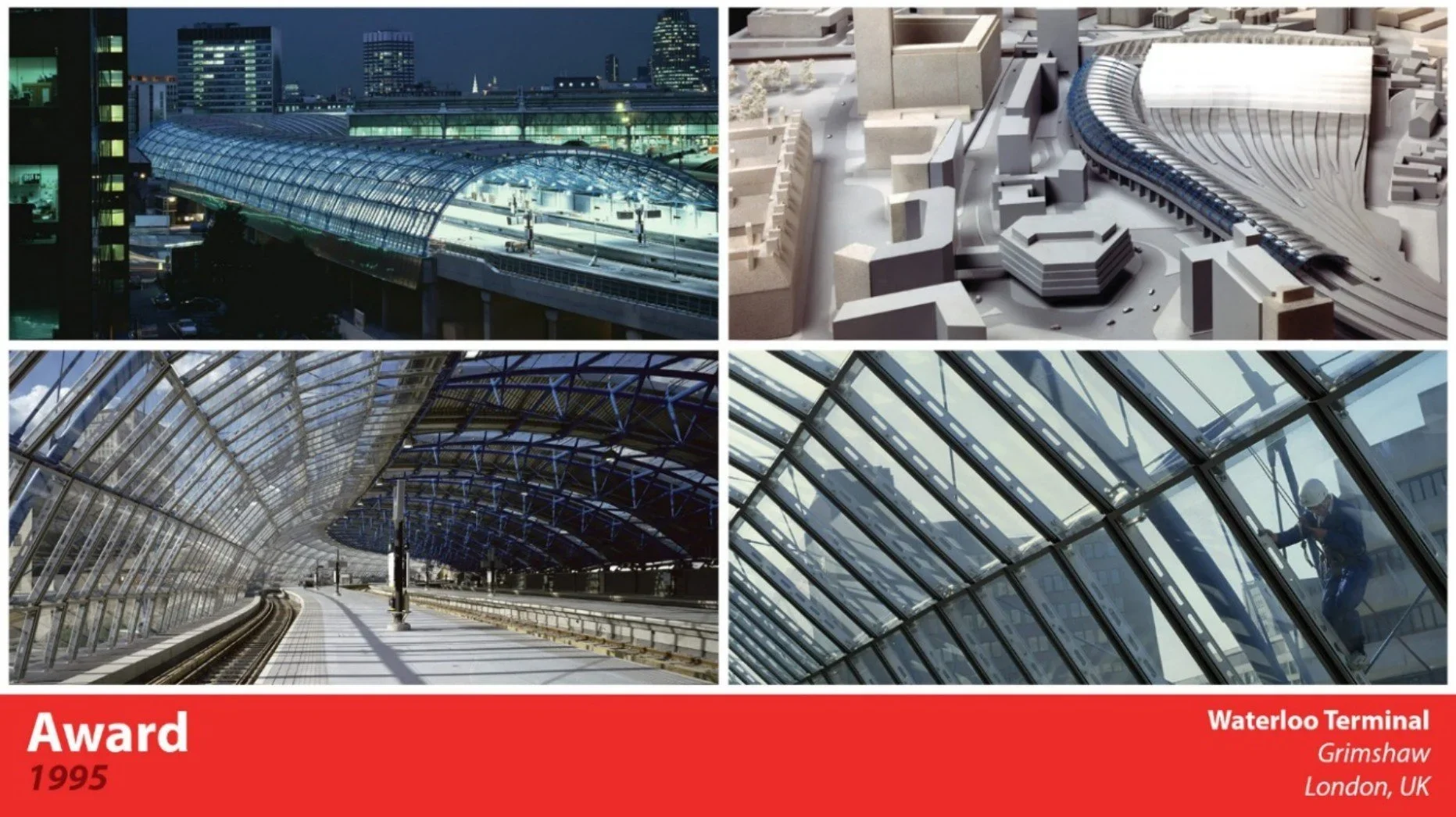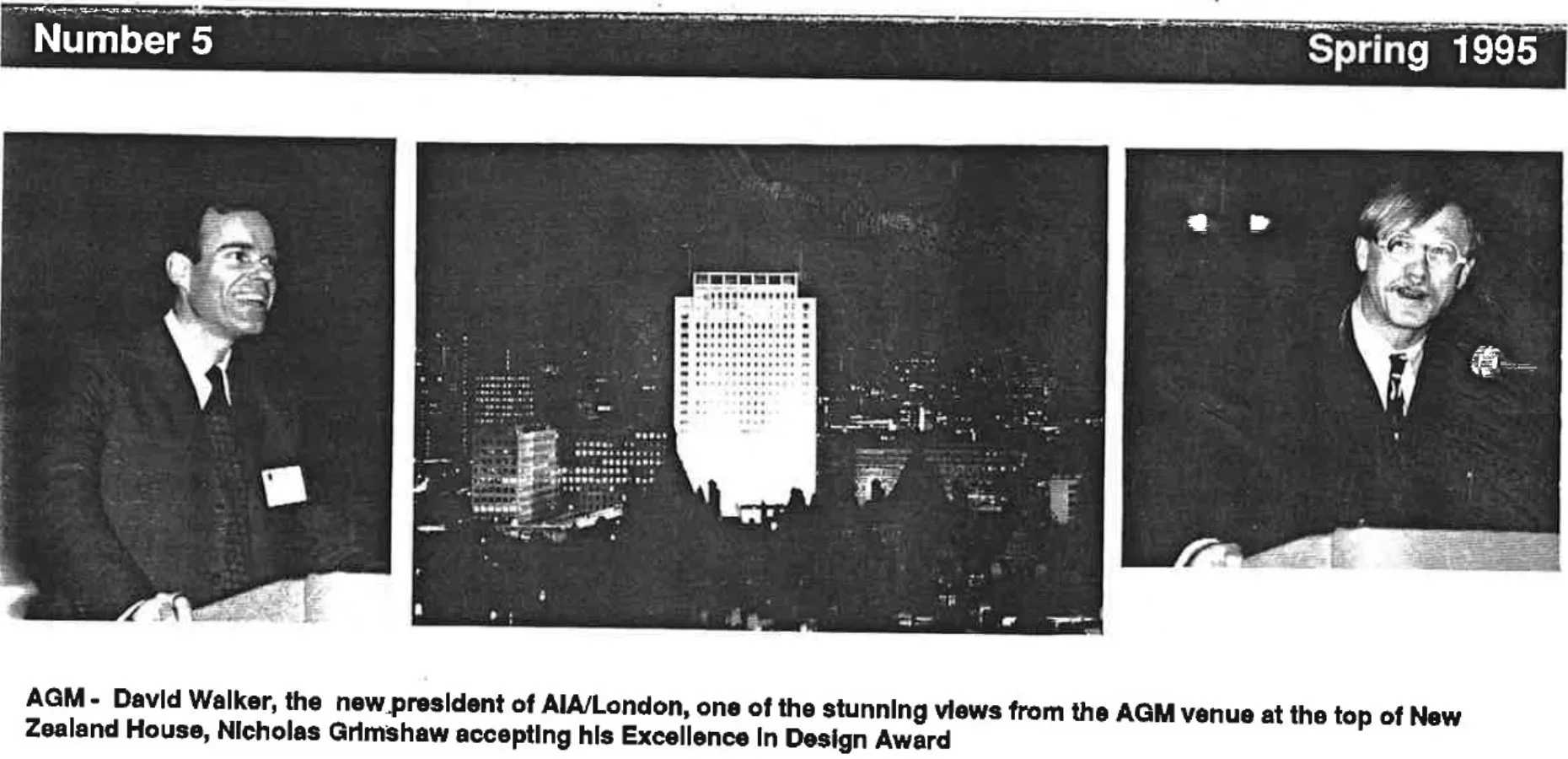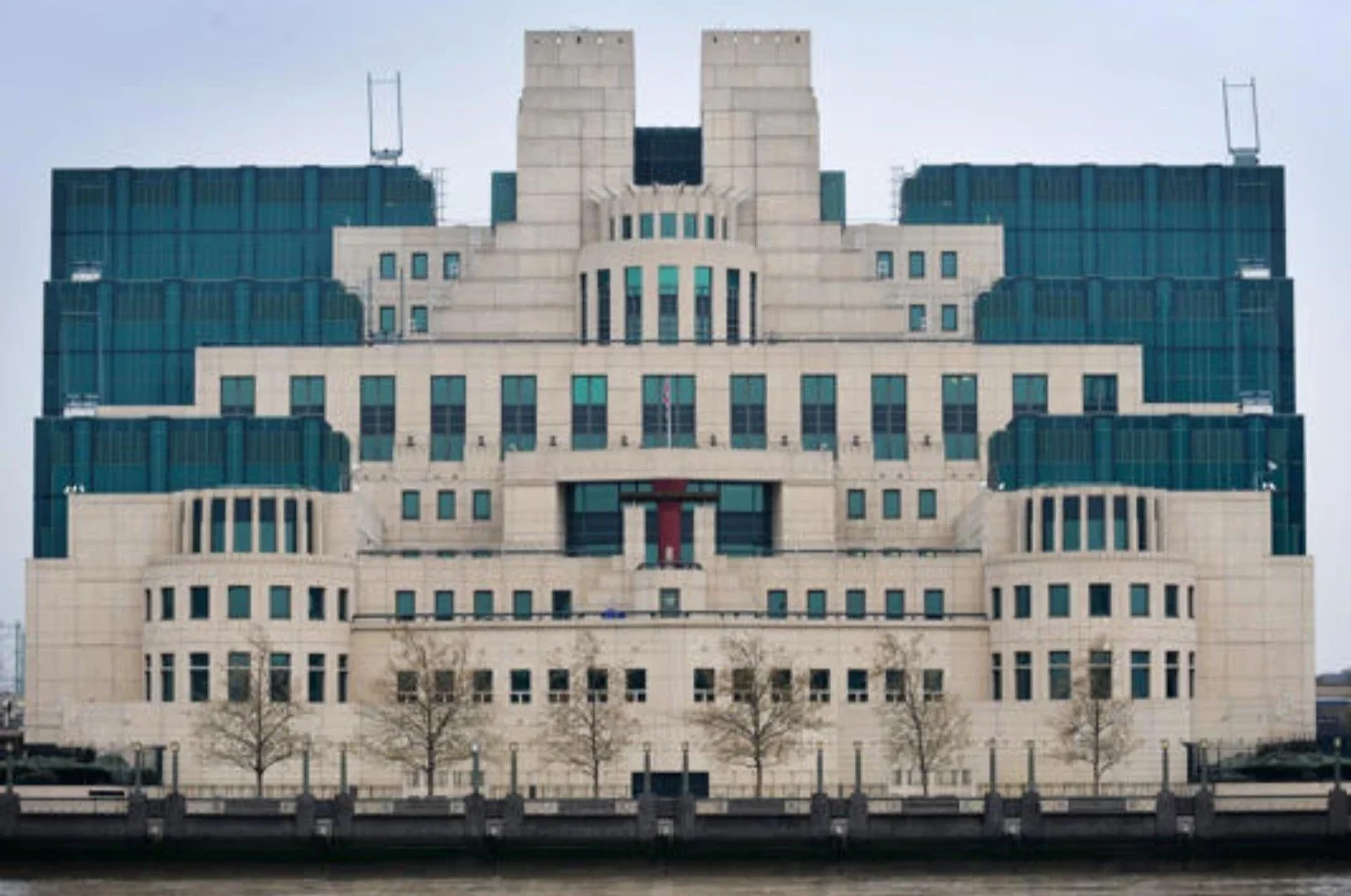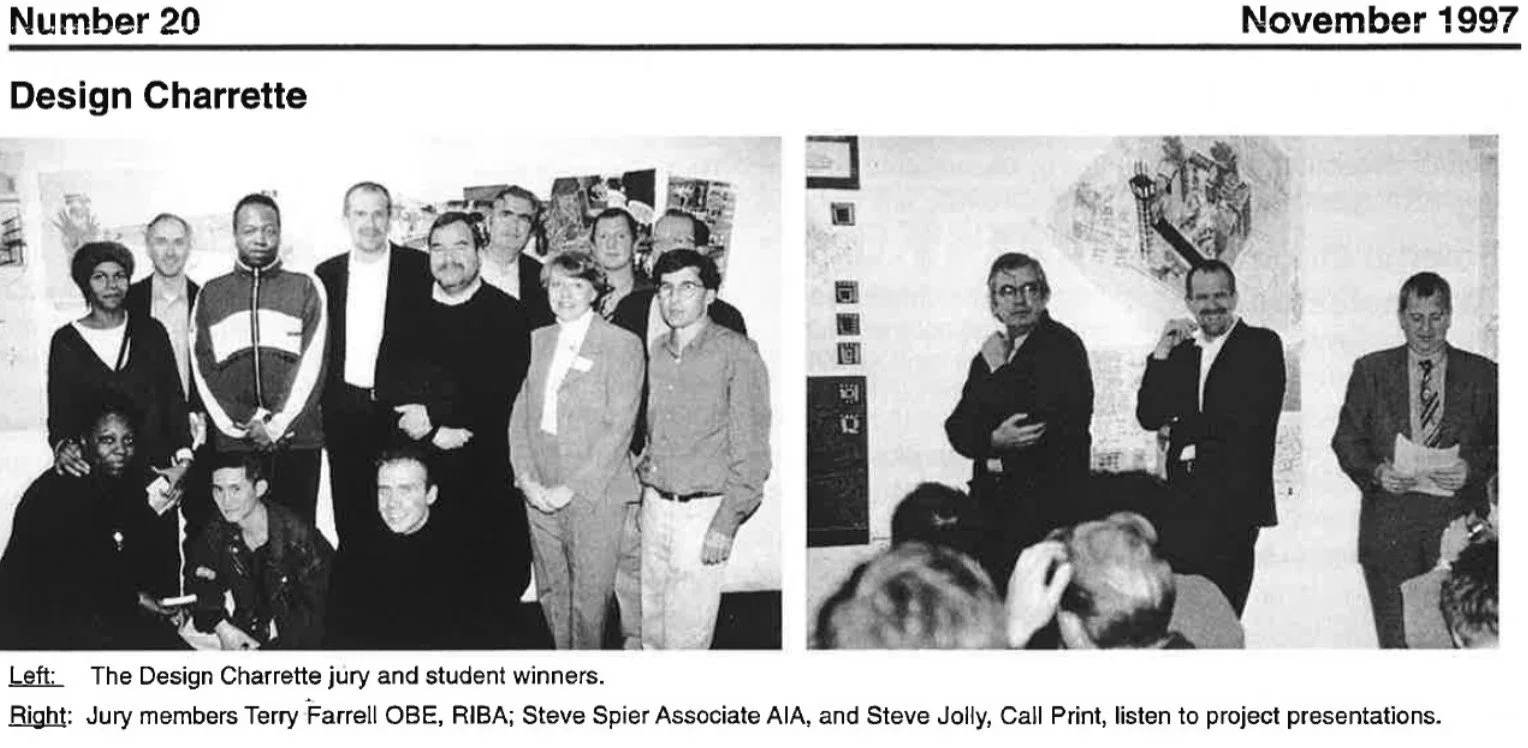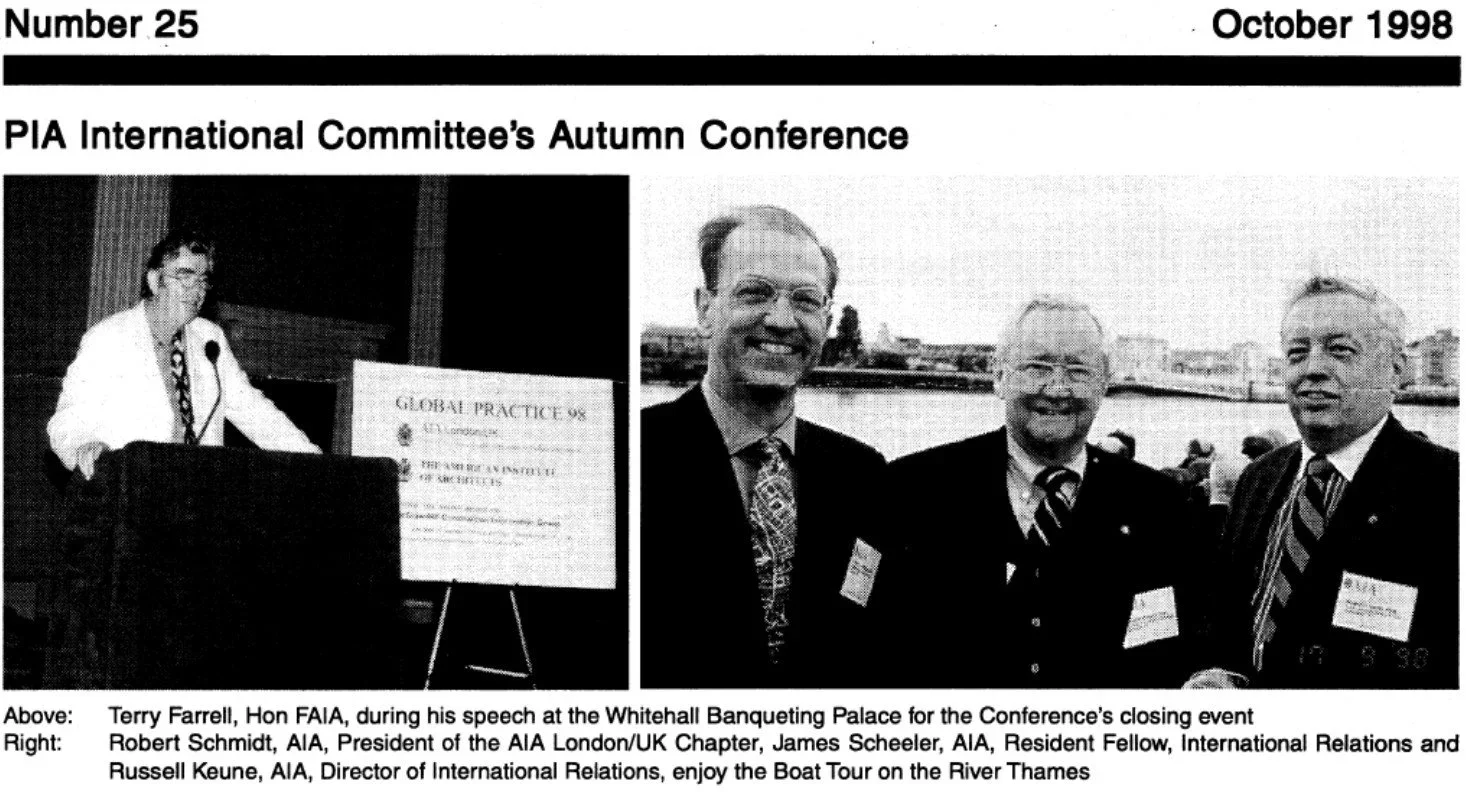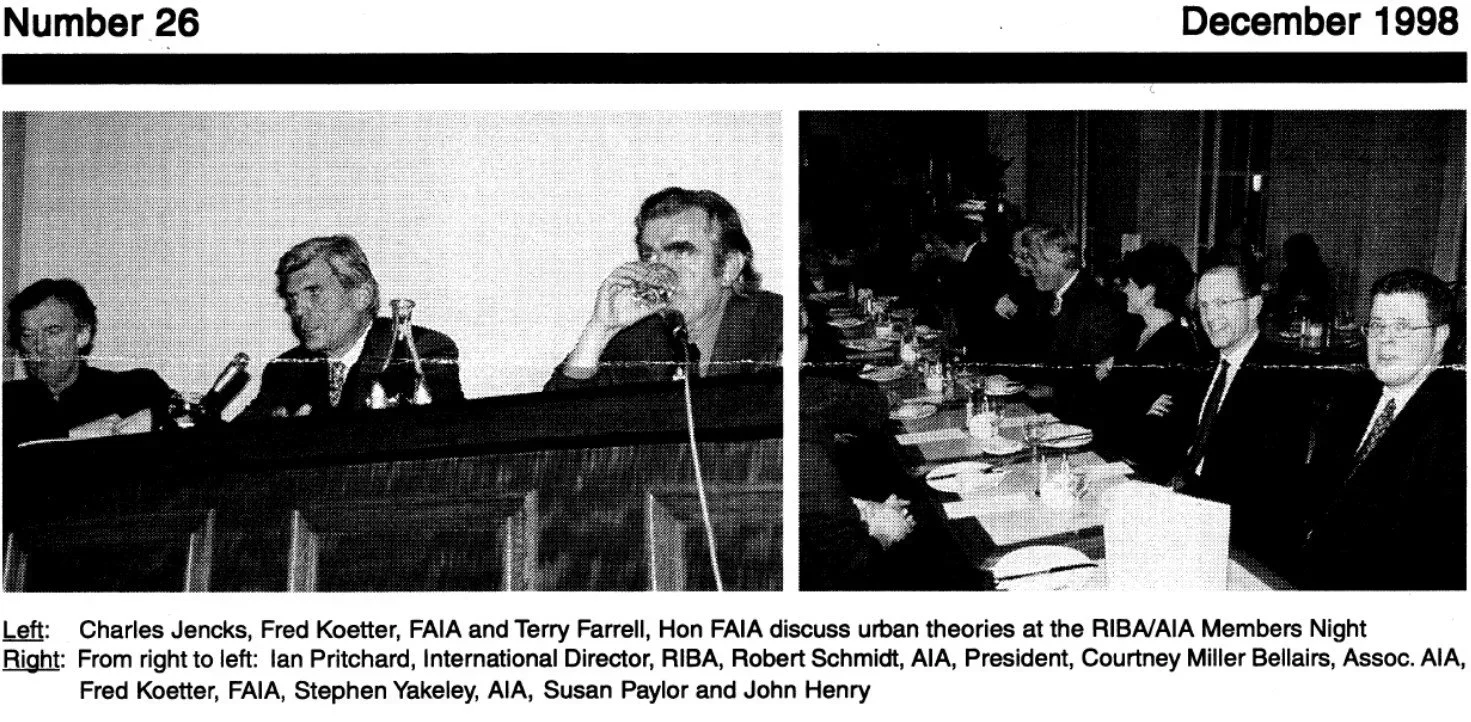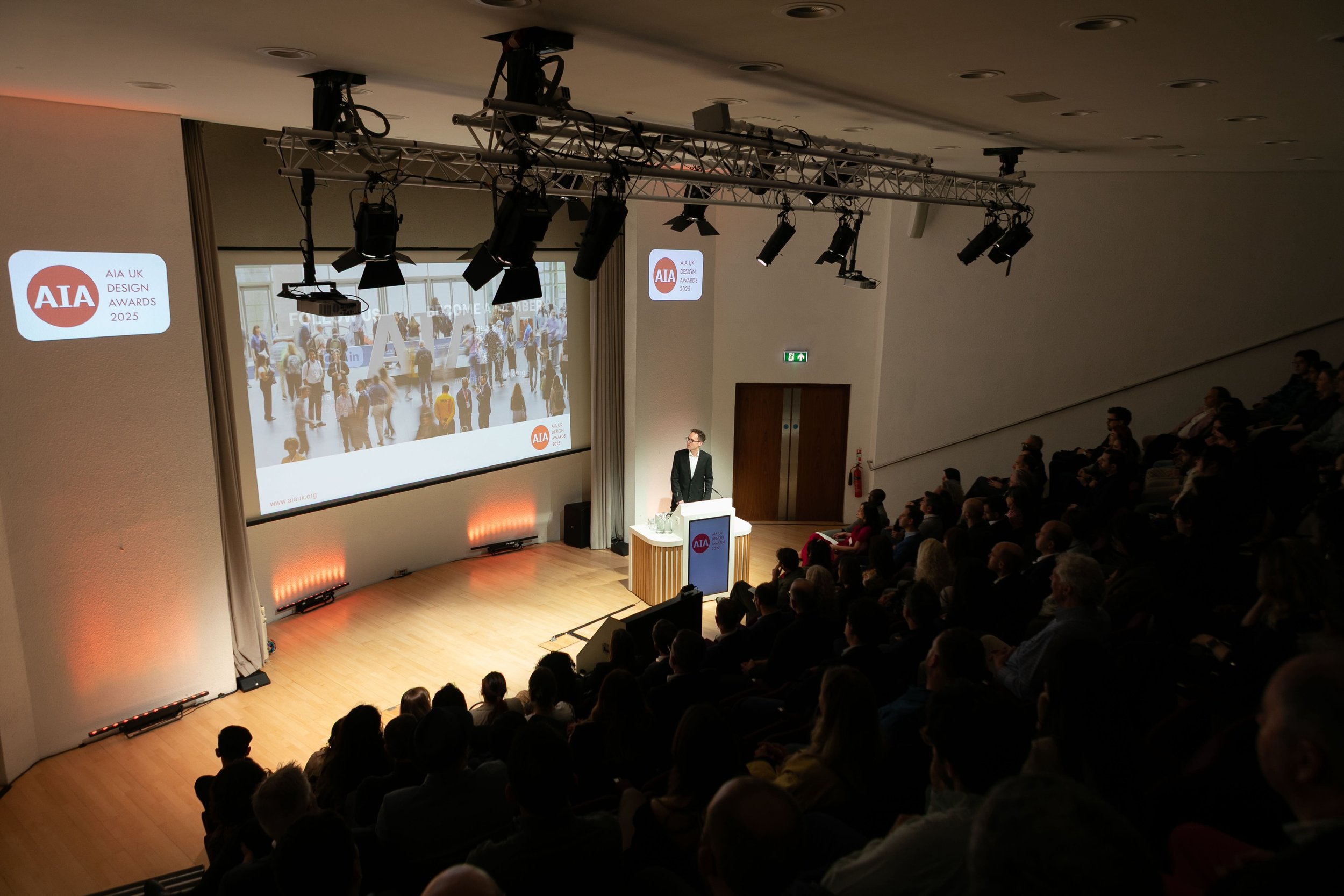AIA UK EDI Event - From Intent to Impact: Designing for Everyone
On October 8th, AIA UK hosted our latest Equity, Diversity and Inclusion focussed event, featuring international Equalities Designer Natasha Trotman.
In her talk, From Intent to Impact: Designing for Everyone, Natasha explored how inclusive and neurodiverse design can transform the built environment when we shift from intent to actionable impact. She unpacked key terminology around neurodiversity and neurodivergence, highlighted the differences between medical, charity, and social models of disability, and emphasised how co-production and intersectionality can foster truly inclusive design outcomes.
Some of the key takeaways included:
Understanding that diversity of minds is the norm, not the exception — there is no one “standard” brain.
The importance of moving beyond compliance to embed inclusion throughout the design lifecycle — from briefing to facilities management.
Applying neuroinclusive principles such as sensory zoning, multisensory wayfinding, and quiet restorative spaces.
Recognising the power of “Nothing About Us Without Us” — engaging people with lived experience as co-producers, not just participants.
Taking practical steps such as sensory audits, inclusive design review panels, and reflective practice to move from awareness to sustained impact.
We thank Natasha Trotman for speaking with the Chapter, and the attendees for their thoughtful engagement throughout the session. It was truly inspiring to see such a mix of perspectives and reflections from across our community. We also want to thank everyone who contributed to the Mentimeter poll - your input will help us shape the themes and direction of our upcoming EDI sessions.
Our next EDI event will take place in the new year — please keep an eye out and follow AIA UK on social media for updates and future talks.
Thank you again for being part of this important and evolving conversation.
Written by Lulu Yang, AIA
AIA UK Remembers - Sir Nicholas Grimshaw and Sir Terry Farrell
While the world’s architectural press lauds the legacy of two architectural giants – Sir Nicholas Grimshaw, Hon FAIA (1939-2025) and Sir Terry Farrell, Hon FAIA (1938-2025) - AIA UK also remembers their critical, poignant support of our Chapter in its long ago early days.
Remembering that the careers of the two men were closely entwined in a partnership from the mid-1960s until 1980, it is fitting that AIA UK honours them both in this combined memorial.
Sir Nicholas Grimshaw
Grimshaw was a pioneer in the high tech architectural movement, as seen in projects such as the Waterloo International Terminal and the Eden Project. He was elected as an AIA Honorary Fellow in 1994.
From an AIA UK perspective, the International Terminal – winner of the Chapter’s 1st Design Awards in 1995 - was one of his most notable achievements. The Award jurors – a distinguished group, including Sir Phillip Dowson, David Leventhal, Rick Mather, Stephen Reinke and Zaha Hadid – described the Terminal as ‘a celebration of movement and technology’…
AIA UK Newsletters #04 and #05, which announced the award, can be read in full HERE and HERE.
Grimshaw Architects maintained connections with AIA UK over the next 30 years, including its hosting of the ‘New York, Ten Years On’ lecture in 2012 by Andrew Whalley (read HERE) and a lecture on the Eden Project.
The practice’s virtual tour of the renovated London Bridge Station in 2022 – one of the best of the covid era - can be watched HERE.
Sir Terry Farrell
Farrell was a key proponent of the postmodernist movement, as exemplified in projects such as the MI6 Building at Vauxhall and the 1980 Venice Architectural Biennale. He was elected as an AIA Honorary Fellow in1998.
From an AIA UK perspective, he is best remembered for his enthusiastic involvement in one of the Chapter’s earliest Student Design Charrettes in 1997. Newsletters #20, which described the event, can be read in full HERE.
As one of a distinguished lineup of speakers, Farrell also joined the AIA Professional Interest Area / International Committee’s 1998 London Conference, addressing the attendees at a spectacular closing diner at the Whitehall Banqueting Hall. With Charles Jencks, Fred Koetter and Rick Mather, he later took part in a memorable AIA/RIBA ‘Urban Head to Head’ seminar.
AIA UK Newsletters #25 and #26, describing the two events, can be read in full HERE and HERE. Although the seminar is recorded in some detail in the article, the lack of a virtual record of what must have been a thought provoking event can only be regretted.
We fondly remember these esteemed architects and the significant contributions they made - both individually and together - to the profession, our Chapter, and the understanding of what architecture can be and can do.
Written by Lorraine King, AIA
2025 AIA UK Excellence in Design Awards
Each year the AIA-UK recognises architectural design excellence through our annual Design Awards. This year, as we approach the 30th iteration of our awards, the AIA UK Board decided to reshape them in four fundamental ways.
Firstly, acknowledging that we are run by and for UK members, we focussed recognition on the excellence of architecture built in the UK only; historically our awards recognised architecture built anywhere in the world.
Secondly, we were keen to more explicitly acknowledge the positive roles architectural design plays in what it does for the people and places in which it is built, so we created broader categories that emphasise the importance of architectural design as a positive integrated intervention within larger social, political, economic, environmental, and physical contexts; historically we have used the rather blunt categories of scale and/or typology.
Thirdly, we wanted to acknowledge the breadth of architectural practice today, from the smallest of spatial interventions to the largest of regenerative infrastructure and landscape, and so we opened entries to any scale or type of project designed by an architect; historically our awards recognised only a traditional notion of the singular building.
Lastly, and perhaps most importantly, acknowledging the vital role of architects in the climate emergency, we continued to ratchet up the base level of environmental sustainability required for entries. We further integrated sustainable approaches and climate impact across both measurable metrics and more holistic approaches as a key criteria for the selection for all winners, valuing both detailed technical approaches, and strategic design decisions to minimise environmental impact and improve the sustainability of projects and their contexts in the broadest possible sense.
To judge this year's awards we were honoured to have the expertise of a fantastic range of jurors: Alison Brooks (Director and Founder of Alison Brooks Architects, and Chair of the Jury), DaeWha Kang (Founder and Director of DaeWha Kang Design), Edoardo Tibuzzi (Design Director, AKT II Engineering), and Ellie Stathaki (Architecture & Environment Director, *Wallpaper Magazine). The jury convened in-person in April to review a diverse range of projects from across the four nations of England, Scotland, Wales, and Northern Ireland, ranging from a tiny isolated picnic lodge, and single family home renovations in suburbia, to new corporate headquarters, vast science laboratories, major infrastructure projects, and pretty much everything in between.
Taking advantage of the renewed criteria, the jurors firstly rigorously narrowed the entrants down by design excellence in their various contexts. From this selection of projects they collectively decided to award projects in the following categories:
'Beyond The Brief', recognising the project that went far beyond the original brief to create something especially impactful for its contexts:
'Outstanding Conservation Project': recognising the importance of architectural design in carefully and thoughtfully restoring historic projects to be conceptually honest to the original structure whilst also bringing the structure up to current building standards, especially around accessibility and energy performance.
'Outstanding Small Project': recognising the power of architectural design to transform the daily lives of its users in highly constrained sites and contexts
'Innovation & Beauty': the project that exemplified particular innovation in architectural design to create moments of beauty in contexts where design is not commonly present or deemed necessary
'Outstanding Place to Commute’: recognising the fundamental role of design in our transitory spaces and transport infrastructure, to move us not only physically but also emotionally too, creating spaces of movement between places and spaces comfortable, practical, durable, and uplifting.
'Outstanding Adaptive Reuse': recognising the vital importance of reusing existing structures not only to preserve contexts and reduce our environmental impact, but also to give new life to places in meaningful and contextually relevant ways through the act of adaptive reuse.
On a pleasant Spring evening in April we hosted our Design Awards Gala Summer Party at Denys Lasdun's brutalist masterpiece of the Royal College of Physicians on Regent's Park. Our members were delighted to be joined by many colleagues and friends from the RIBA, allied professions, and the media. After fine canapes and free-flowing drinks in the gardens, accompanied by the performances of two exceptional classical musicians from the Royal College of Music, the awards were presented to the following winners:
'Beyond The Brief': Walters & Cohen Architects for Godolphin & Latymer School's Dining, Library and Sixth Form Centre, London, England
'Outstanding Conservation Project': Moxon Architects for the restoration of Queen Victoria's Picnic Lodge, Balmoral, Scotland
'Outstanding Small Project': ConForm Architects for the Terzetto Apartment, London, England
'Innovation & Beauty': Tonkin Liu for the Tower of Light, Manchester, England
'Outstanding Place to Commute': Grimshaw Architects for the Elizabeth Line site-wide design, London, England
'Outstanding Adaptive Reuse': Allford Hall Monaghan Morris for their design and masterplanning roles at Norton Folgate, London, England
(The jurors' comments on the winners can be found on our Design Awards 2025 website page)
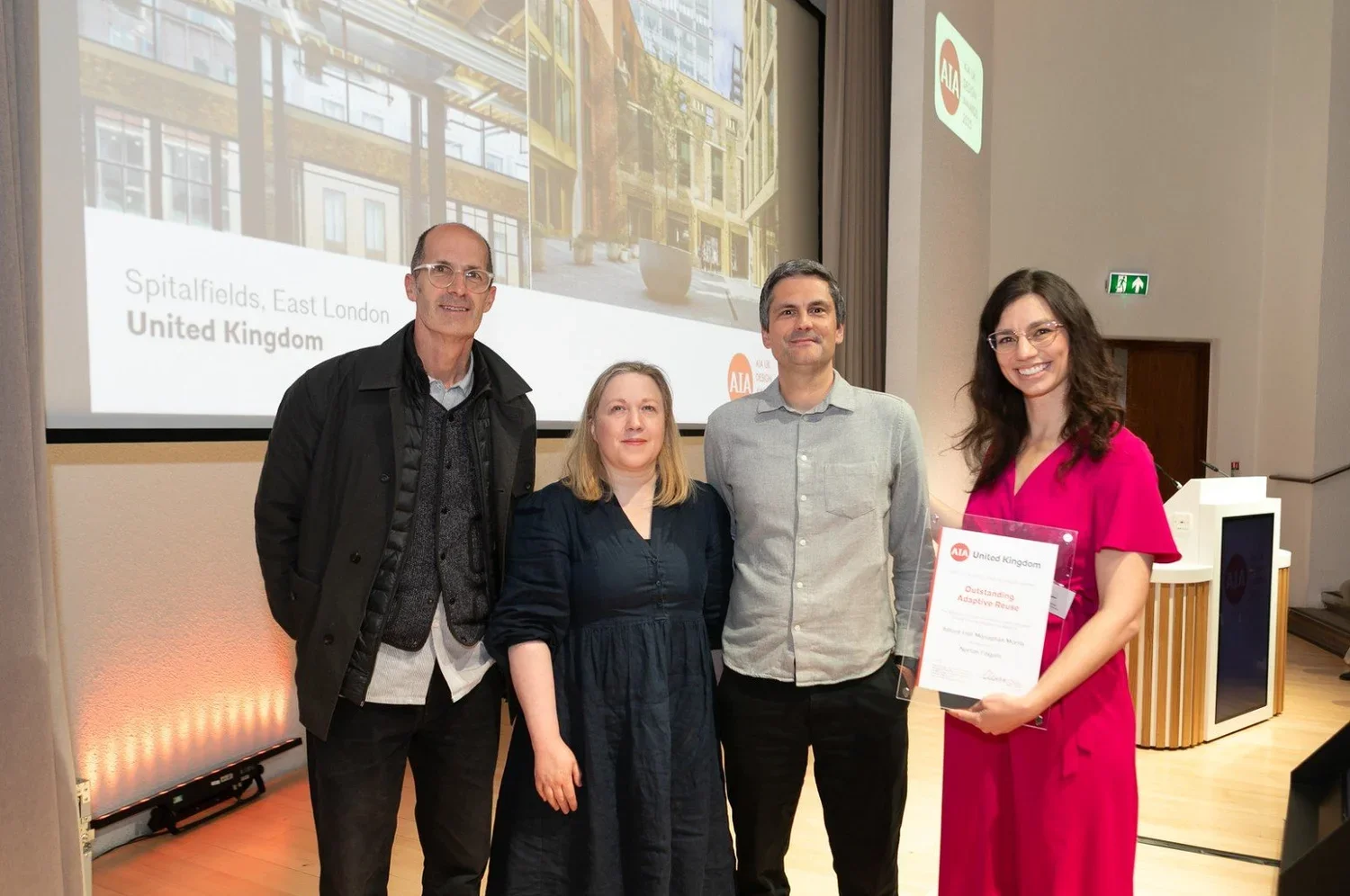
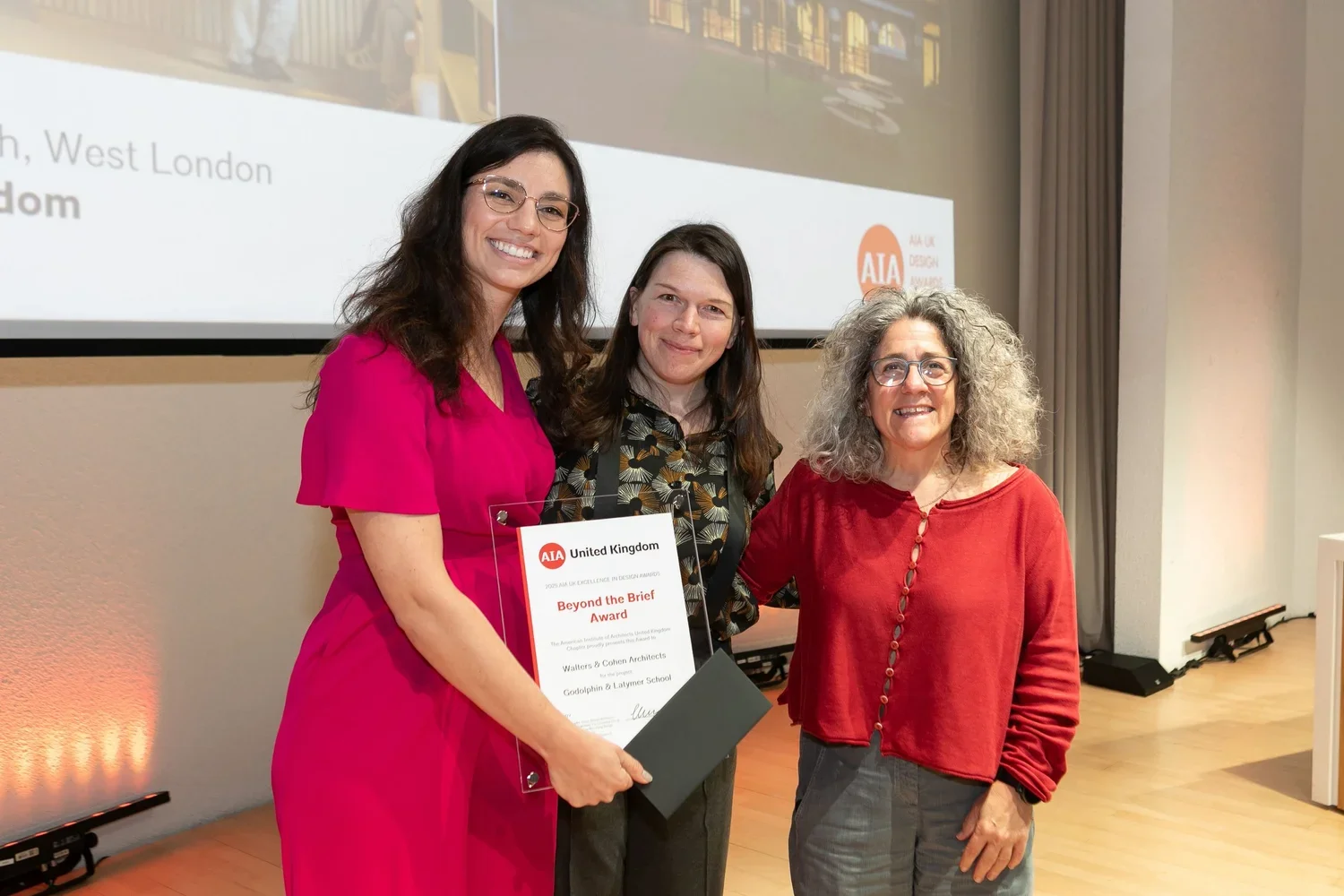
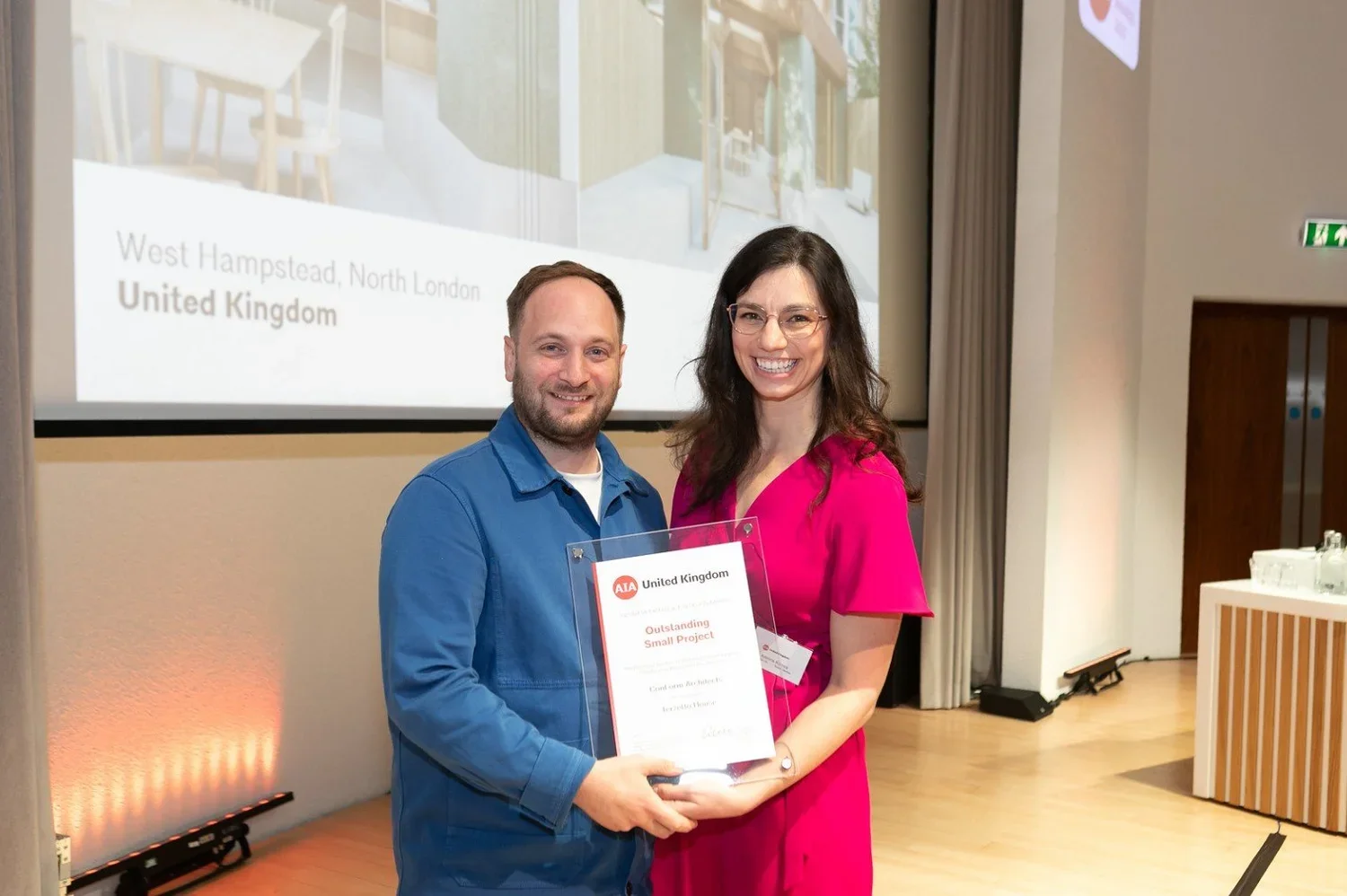
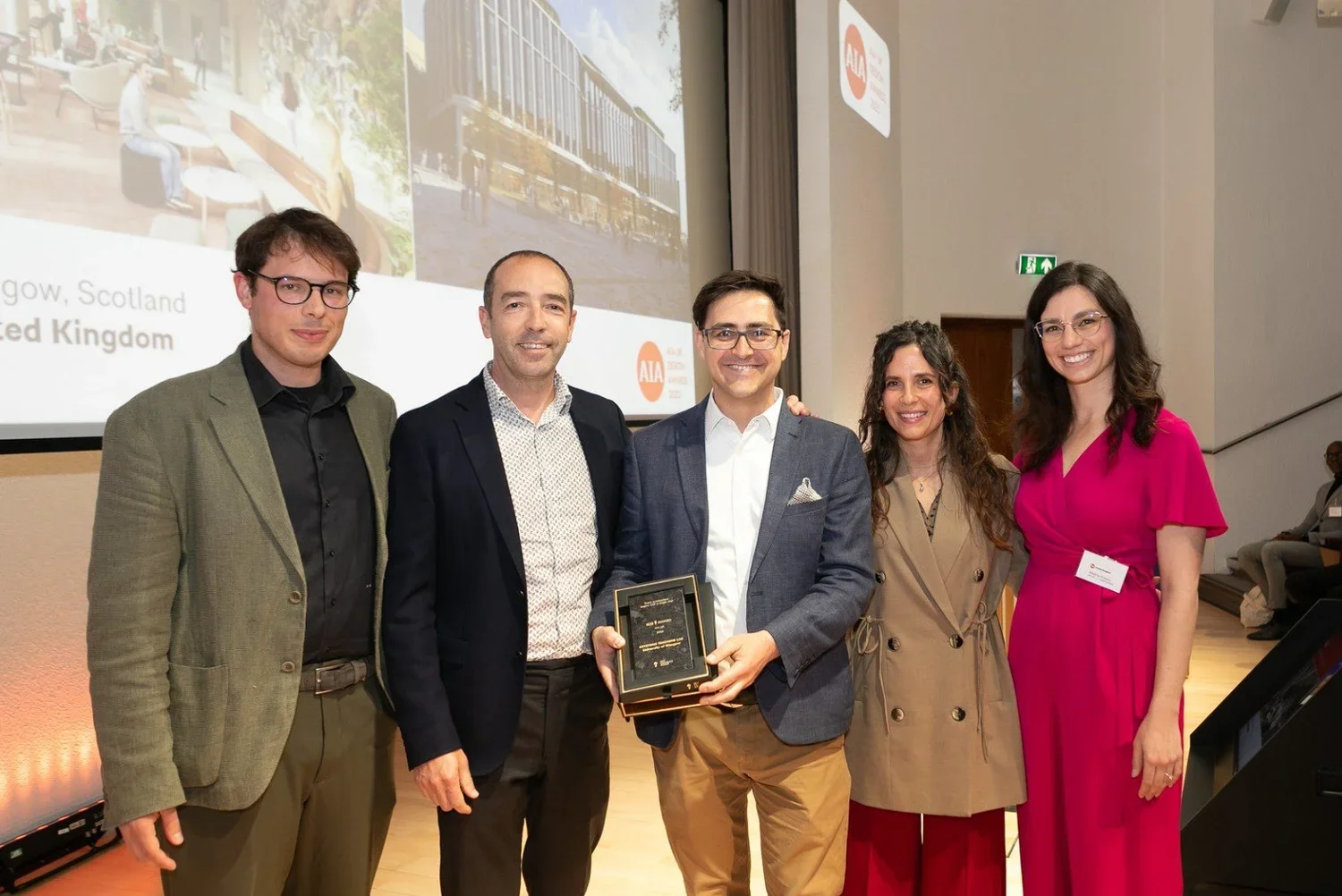
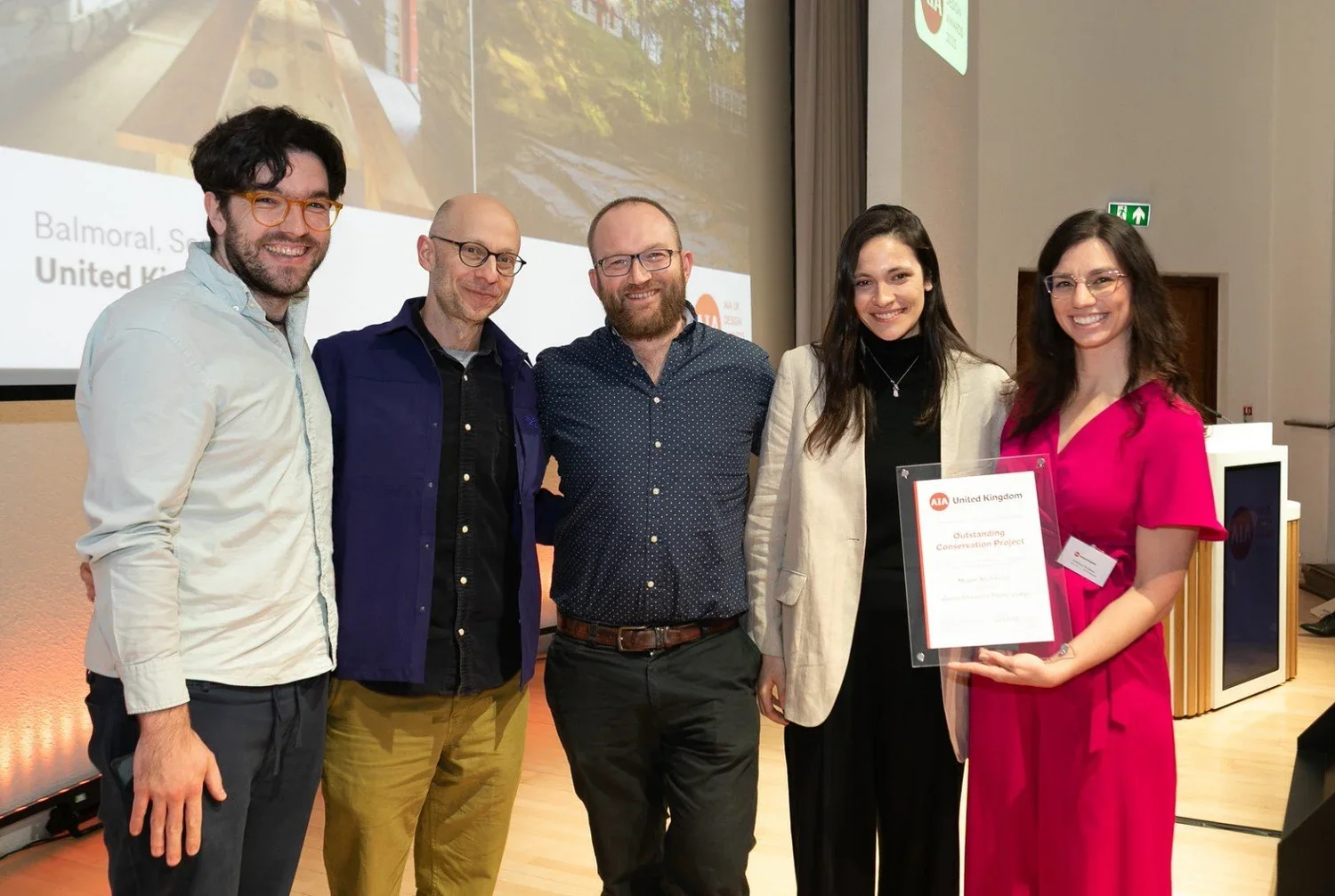
Following the awards ceremony, the party continued in the Royal College and its gardens.
Ultimately our 2025 Excellence in Design Awards were a communal coming together to reassert the vital importance of architects and thoughtful architectural design to improve the world in which we all share. They were a celebration of UK design work across scales and typologies that actively engages with its various contexts and communities as sustainably as possible to positively impact how we live, work, rest, and play everyday, and so help to shape a better world for all.
Our Design Awards are the result of the hard work of many people for many months behind the scenes. We would like to express particular thanks to: our jurors for their dedication, time, and commitment; all the entrants for their time and effort in applying; the Royal College of Physicians for hosting us and providing excellent canapes and drinks; the AIA Board for all their input, help, and logistical support - especially our Vice President Adelina Kolkeva, President Mark E Breeze, Sponsorship Directors Michael Lischer and David Martin, Social Media Director Fiona Edwards, Graphics Director Jamar Rock, and our Chapter Executive Genie Khmelnitski; and lastly, and very importantly, our generous ongoing headline sponsor for the event, Iris Ceramica Group, who have continued to comprehensively and generously support our Design Awards, making it a key signature event in the year.








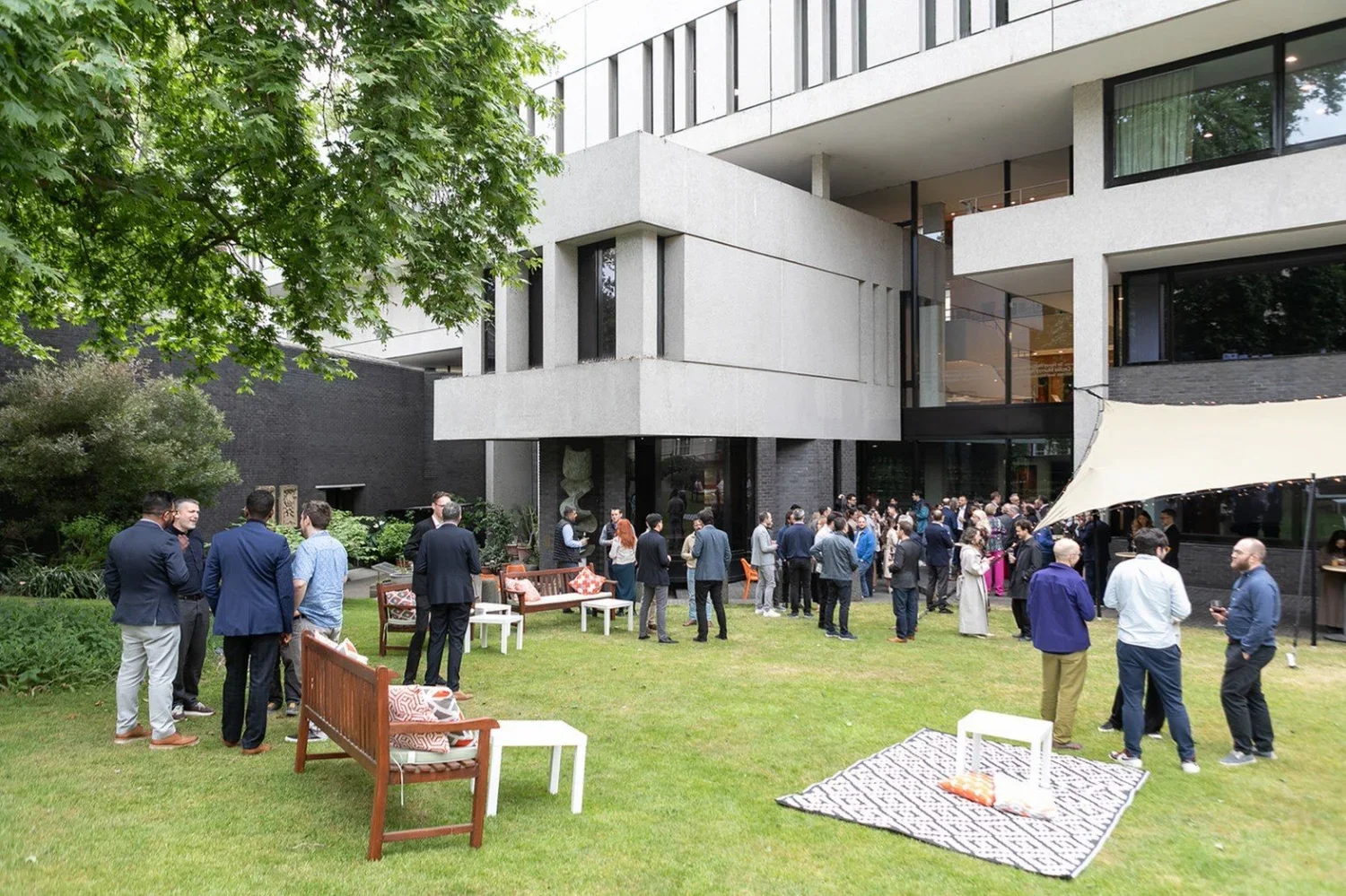
2024 Noel Hill Award Winner
The American Institute of Architects (AIA) UK Chapter is thrilled to announce Ryan Stranger, a recent MArch graduate from Kingston School of Art, as the winner of this year’s Noel Hill Award for his research proposal, After London. Ryan’s work explores the potential of expanding woodland areas within London to support urban resilience, climate adaptation, and ecological connectivity.
After London presents an ambitious strategy to increase London’s tree canopy cover by 10%, aligned with London’s climate goals. Focusing initially on Epping Forest, Ryan’s research incorporates data from CPRE and GIGL to identify urban spaces currently underutilised or inaccessible, transforming them into valuable green infrastructure. The “Green Crown” proposal envisions a continuous woodland network encircling the city, offering both ecological and social benefits, with routes connecting communities through natural spaces.
The project builds on ecological surveys, aerial mappings, and a deep historical analysis of London’s relationship with nature. By reactivating “Forest Rights” inspired by historic Epping Forest, After London seeks to create accessible sites that allow Londoners to connect with nature across generations. The award will help fund the next research phase, enabling on-site ecological assessments in high-risk climate zones, particularly areas prone to urban heat and flooding. These findings will contribute to a model for sustainable urbanisation within and beyond London.
The jury unanimously praised After London for its clear vision and practical approach to enhancing urban resilience through expanded woodland in and around London. They commended Ryan Stranger's proposal for its well-balanced research methodology, which integrates ambitious, large-scale thinking with tangible, site-specific strategies. The proposal’s visual communication was noted as especially compelling, illustrating the feasibility of a “Green Crown” that leverages London’s existing natural assets, such as Epping Forest, and incorporates underutilised urban spaces into a continuous green network.
After London was celebrated for its ability to build upon existing studies while contributing new insights to urban design, architecture, and ecological development in London. The project’s approach to connecting ecological spaces around London was recognised as impactful, with clear potential to meaningfully enhance the city’s climate resilience through improved canopy cover. The jury highly commended the proposal for its thoughtful consideration of urban trees as an essential element of the cityscape, highlighting Ryan’s work as a model for sustainable urbanism with long-term benefits for Londoners.
2024 Noel Hill Research Award Jurors: Samantha Cooke (Director, KPF), Taylor Rogers (Associate Director, Hopkins Architects), and Karla Montauti (Associate Director, Benoy).
The Noel Hill Award was judged by an esteemed panel: Taylor Rogers from Hopkins Architects, Karla Montauti from Benoy, and Samantha Cooke from KPF. AIA UK extends its gratitude to these judges for their careful consideration and thoughtful evaluation of each submission.
Congratulations to Ryan Stranger for this outstanding achievement. After London exemplifies the visionary thinking the Noel Hill Award seeks to recognise, blending ecological integrity with urban functionality to create a resilient, greener future for London.
Written by Paolo Mendoza, Associate AIA
Chapter Board Members Meet AIA President
While in London for meetings with the RIBA, National AIA President Russell Davidson, FAIA took the opportunity to meet with AIA UK board members. Bea Sennewald, Robert Rhodes, and Michael Lischer, all AIA UK past presidents and Fatos Peja, current AIA UK president elect met with Russell for a lunch meeting on the 3rd of October.
Russell described the AIA's efforts to raise the profile of the profession and make the AIA more inclusive. Efforts include launching programs for kindergarten through 12th grade students to introduce them to the profession and the importance of good design. This program is particularly appropriate for Russell as his 35 person New York practice specializes in education.
Another initiative currently being studied by the national board is to open the AIA's annual convention to the general public. The goal is to engage all those with an interest in architecture, including building owners, developers, contractors, users, and the public. This may require changes to the continuing education program and the design exposition.
The meeting with Russell was very informative and left us with the impression good things are happening at the AIA and the next few years promises to be very interesting for the AIA and its members.
By Michael Lischer FAIA
Construction payment charter updated – a missed opportunity?
The Government’s Construction Leadership Council has published an updated Construction Supply Chain Payment Charter to reflect commitments in the original charter. In our view much more could have been done to strengthen the updated charter; the onus remains very much on the industry to tackle the issue of late payment.
READ our article which details what's new and what impact the new charter will have.
By Will Buckby and Andrew Croft







